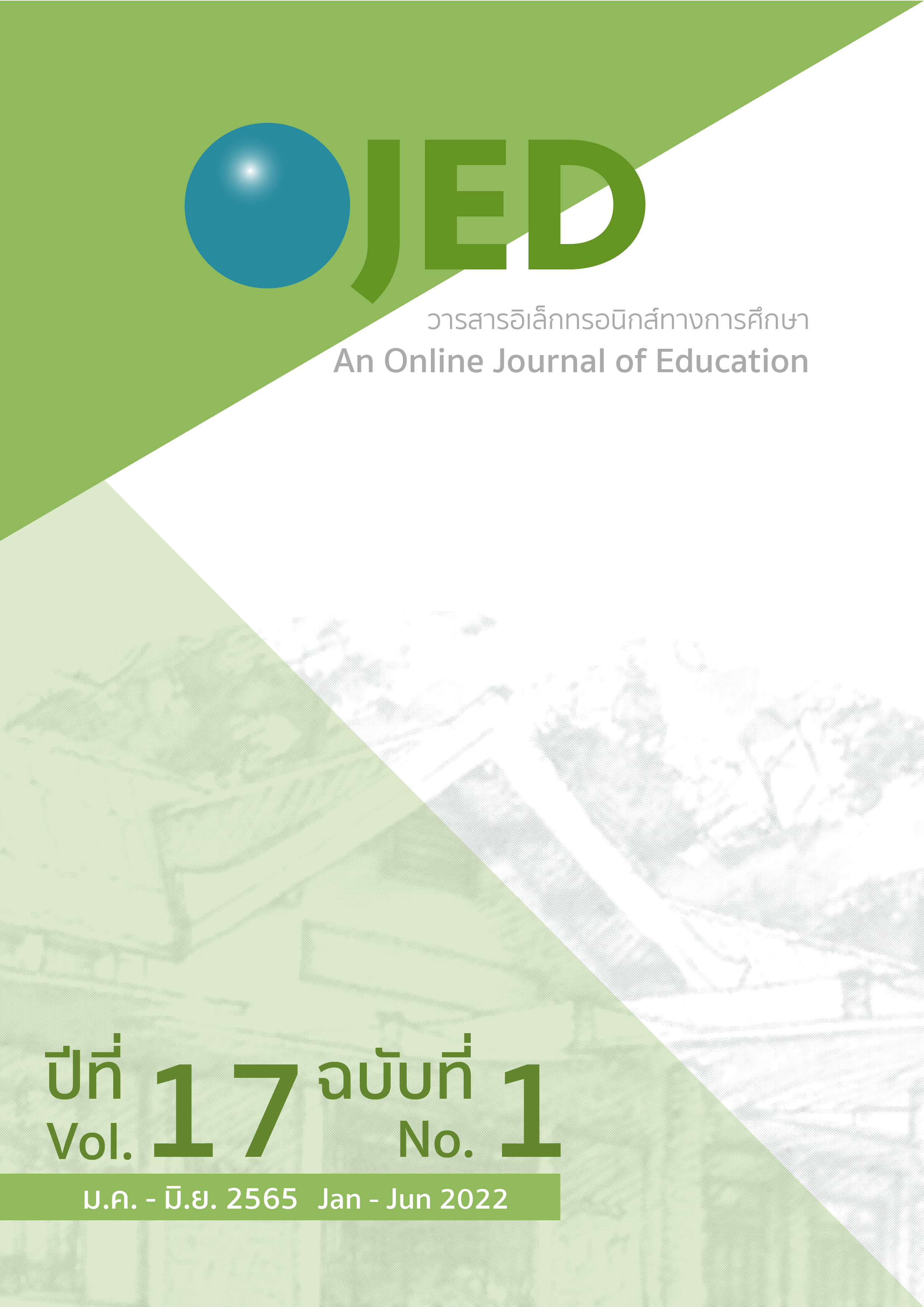Digital Literacies for English Reading Fluency: An Explanatory Study
DOI:
https://doi.org/10.14456/ojed.2022.6Keywords:
digital literacies, reading fluency, reading rate, reading comprehensionAbstract
This mixed-methods study aimed 1) to examine the effects of Digital Literacies on English reading fluency in terms of English reading rate and English reading comprehension for undergraduate students, and 2) to investigate undergraduate students’ uses of Digital Literacies. The participants consisted of 60 third-year undergraduate students from the Faculty of Architecture at a public university in Thailand in the 2020 academic year. The instruments were 1) Online English Reading Fluency Test (pretest and posttest), 2) English Reading Fluency Practice: Reading Rate Chart, and 3) Learning Logs. The data were analyzed using paired sample t-test and coding analysis. The results demonstrate that 1) the paired sample t-test reveals that students significantly increased their Digital Literacy for English reading fluency at a significant level .05, with a small sized effect of .40 in English reading rate, and a medium sized effect of .71 in English reading comprehension, and 2) students reported positively upon four elements of Digital Literacies, including (1) Communication (2) Information (3) Collaboration, and (4) (Re-) Design. The study explains how each element enhances English reading fluency and offers guidelines for integrating Digital Literacies into English reading instruction.
References
Anderson, N. J. (2018). Silent Reading Fluency. The TESOL Encyclopedia of English Language Teaching, 1-10. https://doi.org/10.1002/9781118784235.eelt0464
Ari, O. (2015). Fluency gains in struggling college readers from wide reading and repeated readings. Reading Psychology, 36(3), 270-297. https://doi.org/10.1080/02702711.2013.864361
Castek, J., & Manderino, M. (2017). Digital literacies for disciplinary learning: A call to action. Journal of Adolescent & Adult Literacy, 60(1), 79–81. http://dx.doi.org/10.1002/jaal.565
Dashtestani, R., & Hojatpanah, S. (2020). Digital literacy of EFL students in a junior high school in Iran: Voices of teachers, students and ministry directors. Computer Assisted Language Learning, 1-31. https://doi.org/10.1080/09588221.2020.1744664
Dobbs, C. L., Ippolito, J., & Charner-Laird, M. (2017). Chapter 7: Making initial meaning of disciplinary literacy principles and practices. In E. A. City (Ed.), Investigating disciplinary literacy: A framework for collaborative professional learning (pp. 110-112). Harvard Education.
Duke, N.K., Ward, A.E., & Pearson, P.D. (2021). The Science of Reading Comprehension Instruction. The Reading Teacher, 74(6), 663– 672. https://doi.org/10.1002/trtr.1993
Fesel, S. S., Segers, E., & Verhoven, L. (2018). Individual variation in children’s reading comprehension across digital text types. Journal of Research in Reading, 41(1), 106-121. https://onlinelibrary.wiley.com/doi/10.1111/1467-9817.12098
Gorzycki, M., Desa, G., Howard, P. & Allen, D. (2019). “Reading is important,” but “I don't read”: Undergraduates’ experiences with academic reading. Journal of Adolescent & Adult Literacy, 63(5), 499-508. https://doi.org/10.1002/jaal.1020
Goss, M., Castek, J., & Manderino, M. (2016). Disciplinary and digital literacies: Three synergies. Journal of Adolescent & Adult Literacy, 60(3), 335-340 https://doi.org/10.1002/jaal.598
Grabe, W., & Stoller, F. L. (2020a). Teaching reading: Foundations and practices. In C. A. Chapelle (Ed.), The encyclopedia of applied linguistics, https://doi.org/10.1002/9781405198431.wbeal1174.pub2
Grabe, W., & Stoller, F. L. (2020b). Teaching and Researching Reading (3rd ed.). Routledge. https://doi.org/https://doi.org/10.4324/9781315726274
Liaw, M. L., & English, K. (2017). Technologies for teaching and learning L2 reading. In The handbook of technology and second language teaching and learning (pp. 62-76). John Wiley & Sons.
Ma’rof, A. M. (2014). Think, talk, read, and write better English: Improving L2 literacy skills of Malaysian school children through collaborative reasoning [Doctoral dissertation]. IDEALS. http://hdl.handle.net/2142/73108
Pegrum, M., Dudeney, G., & Hockly, N. (2018). Digital literacies revised. European Journal of Applied Linguistics and TEFL, 7(2), 3-24. https://www.proquest.com/docview/2342473158/fulltextPDF/5BE5C72ADCB14EB4PQ/1?accountid=15637
Serrano, R., & Huang, H. Y. (2018). Learning vocabulary through assisted repeated reading: How much time should there be between repetitions of the same text? TESOL Quarterly, 52(4), 971-994. https://doi.org/10.1002/tesq.445
Shin, J., Dronjic, V., & Park, B. (2019). The interplay between working memory and background knowledge in L2 reading comprehension. TESOL Quarterly, 53(2), 320-347. https://doi.org/10.1002/tesq.482
Techataweewan, W., & Prasertsin, U. (2018). Development of digital literacy indicators for Thai undergraduate students using mixed method research. Kasetsart Journal of Social Sciences, 39(2), 215-221. https://doi.org/10.1016/j.kjss.2017.07.001
Tour, E. (2019). Teaching digital literacies in EAL/ESL classrooms: Practical strategies. TESOL Journal, 11(1), e00458. https://doi.org/10.1002/tesj.458
Zwick, M. J. (2018). Measuring reading fluency. The TESOL Encyclopedia of English Language Teaching, 1-7. https://doi.org/10.1002/9781118784235.eelt0495
Downloads
Published
How to Cite
Issue
Section
License
Copyright (c) 2022 An Online Journal of Education

This work is licensed under a Creative Commons Attribution-NonCommercial-NoDerivatives 4.0 International License.




